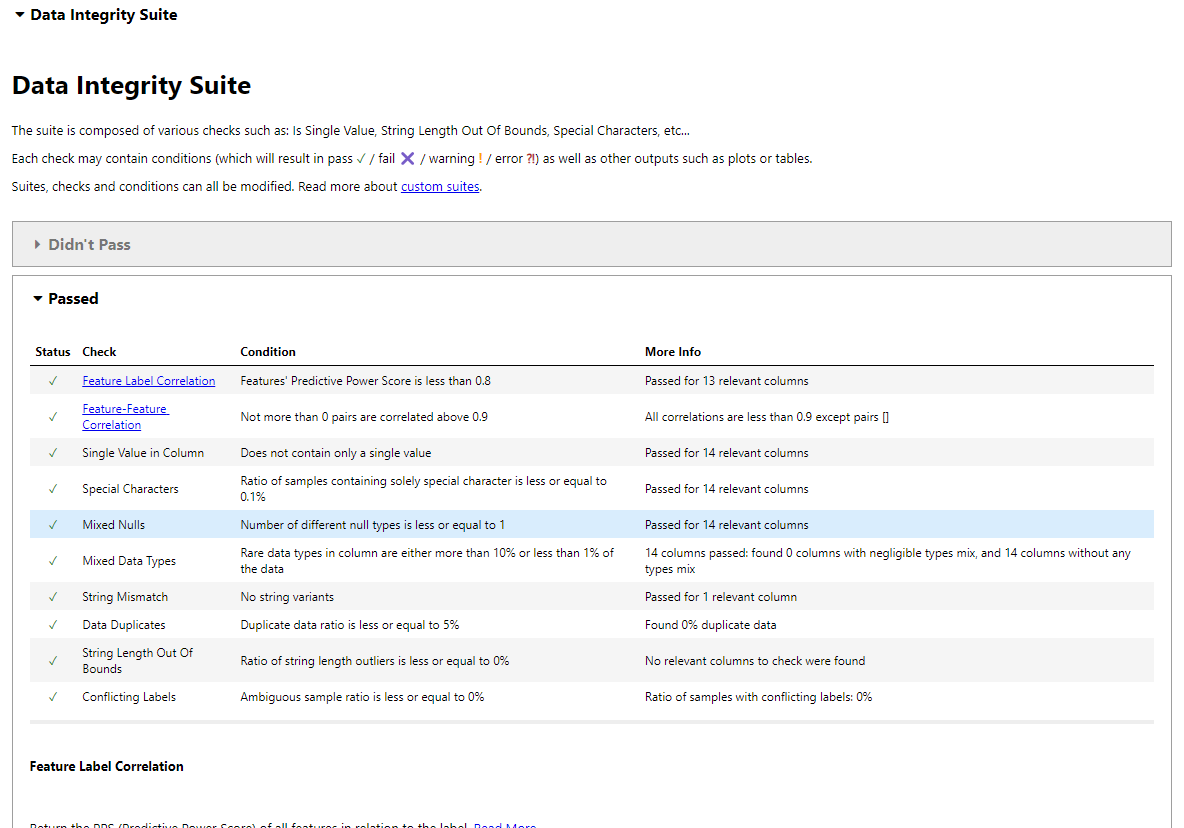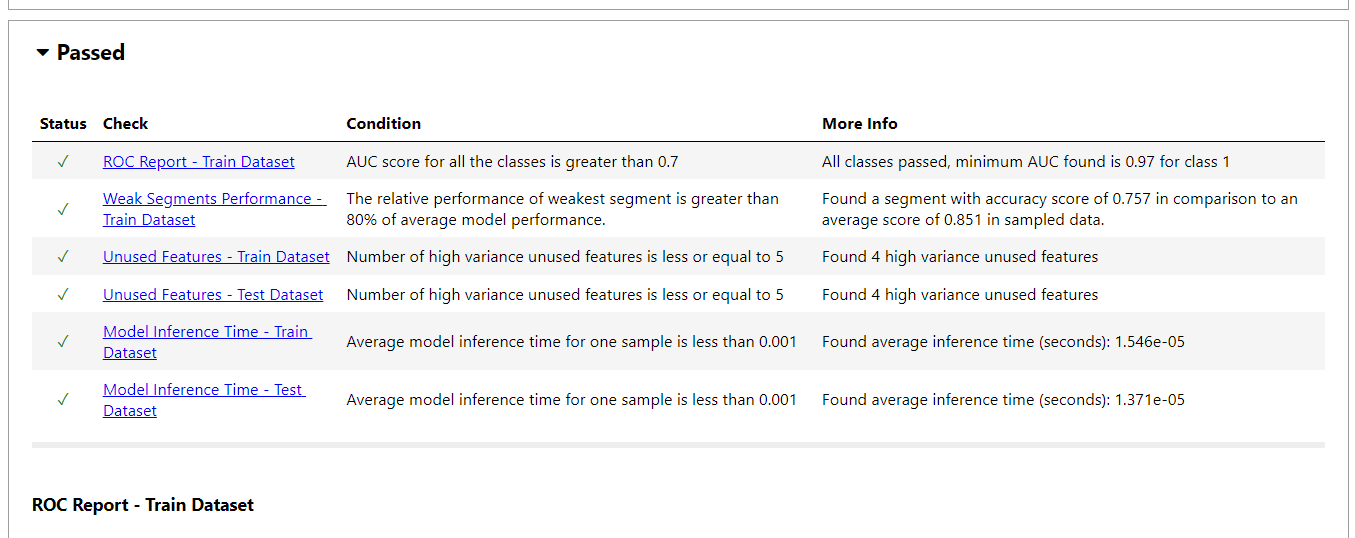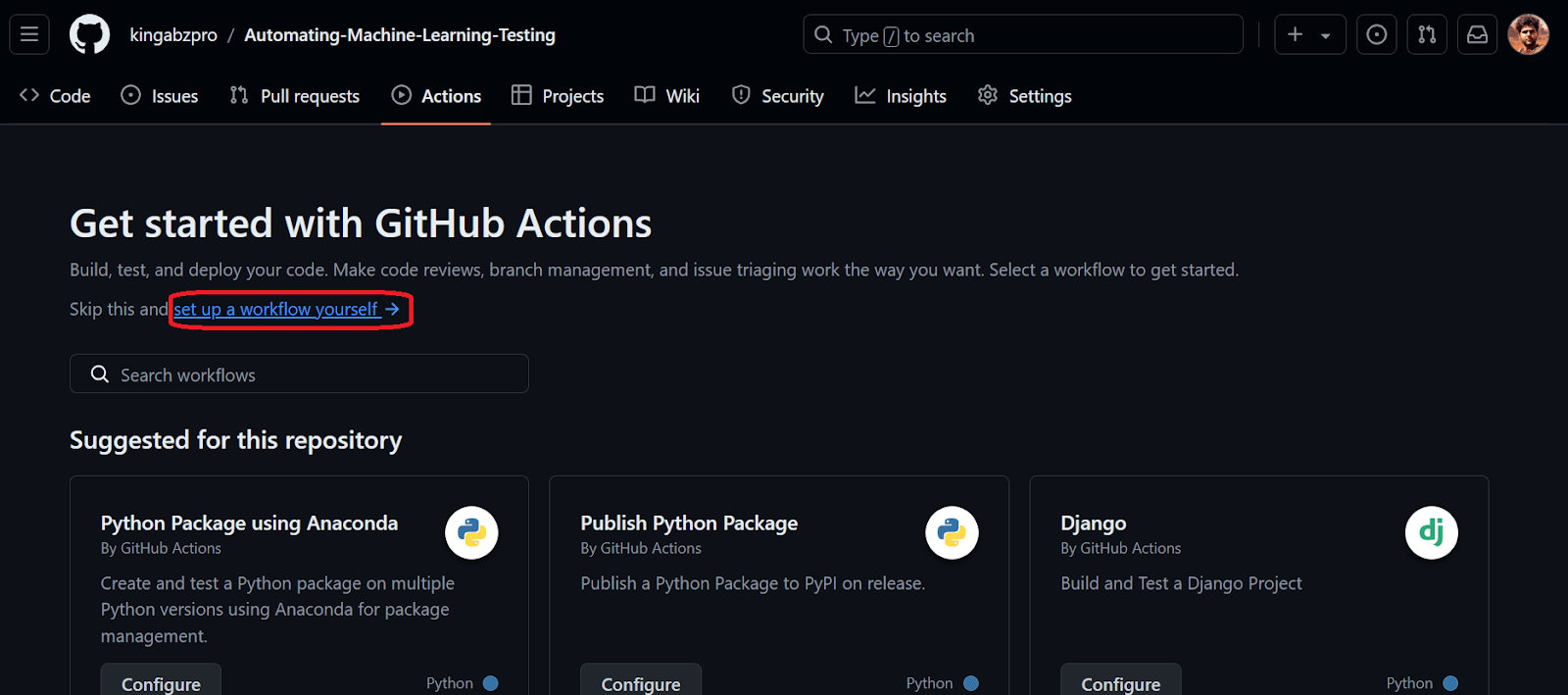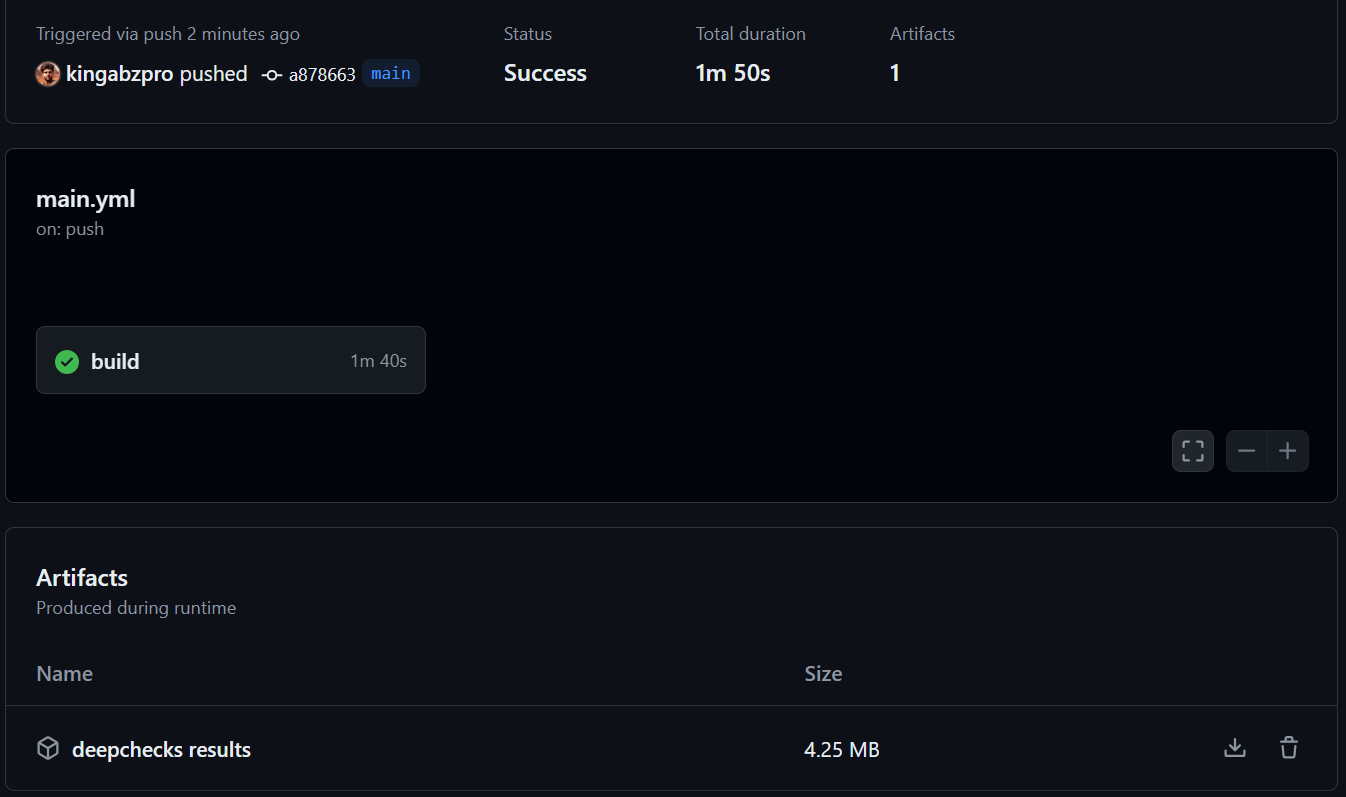DeepChecks Tutorial: Automating Machine Learning Testing
This tutorial explores DeepChecks for data validation and machine learning model testing, and leverages GitHub Actions for automated testing and artifact creation. We'll cover machine learning testing principles, DeepChecks functionality, and a complete automated workflow.

Image by Author
Understanding Machine Learning Testing
Effective machine learning requires rigorous testing beyond simple accuracy metrics. We must assess fairness, robustness, and ethical considerations, including bias detection, false positives/negatives, performance metrics, throughput, and alignment with AI ethics. This involves techniques like data validation, cross-validation, F1-score calculation, confusion matrix analysis, and drift detection (data and prediction). Data splitting (train/test/validation) is crucial for reliable model evaluation. Automating this process is key to building dependable AI systems.
For beginners, the Machine Learning Fundamentals with Python skill track provides a solid foundation.
DeepChecks, an open-source Python library, simplifies comprehensive machine learning testing. It offers built-in checks for model performance, data integrity, and distribution, supporting continuous validation for reliable model deployment.
Getting Started with DeepChecks
Install DeepChecks using pip:
1 |
|
Data Loading and Preparation (Loan Dataset)
We'll use the Loan Data dataset from DataCamp.
1 2 3 |
|

Create a DeepChecks dataset:
1 2 3 4 5 |
|
Data Integrity Testing
DeepChecks' data integrity suite performs automated checks.
1 2 3 4 |
|
This generates a report covering: Feature-Label Correlation, Feature-Feature Correlation, Single Value Checks, Special Character Detection, Null Value Analysis, Data Type Consistency, String Mismatches, Duplicate Detection, String Length Validation, Conflicting Labels, and Outlier Detection.

Save the report:
1 |
|
Individual Test Execution
For efficiency, run individual tests:
1 2 3 4 5 6 |
|
Model Evaluation with DeepChecks
We'll train an ensemble model (Logistic Regression, Random Forest, Gaussian Naive Bayes) and evaluate it using DeepChecks.
1 |
|
The model evaluation report includes: ROC curves, weak segment performance, unused feature detection, train-test performance comparison, prediction drift analysis, simple model comparisons, model inference time, confusion matrices, and more.

JSON output:
1 2 3 |
|
Individual test example (Label Drift):
1 2 3 4 5 |
|
Automating with GitHub Actions
This section details setting up a GitHub Actions workflow to automate data validation and model testing. The process involves creating a repository, adding data and Python scripts (data_validation.py, train_validation.py), and configuring a GitHub Actions workflow (main.yml) to execute these scripts and save the results as artifacts. Detailed steps and code snippets are provided in the original input. Refer to the kingabzpro/Automating-Machine-Learning-Testing repository for a complete example. The workflow utilizes the actions/checkout, actions/setup-python, and actions/upload-artifact actions.


Conclusion
Automating machine learning testing using DeepChecks and GitHub Actions significantly improves efficiency and reliability. Early detection of issues enhances model accuracy and fairness. This tutorial provides a practical guide to implementing this workflow, enabling developers to build more robust and trustworthy AI systems. Consider the Machine Learning Scientist with Python career track for further development in this field.
The above is the detailed content of DeepChecks Tutorial: Automating Machine Learning Testing. For more information, please follow other related articles on the PHP Chinese website!

Hot AI Tools

Undresser.AI Undress
AI-powered app for creating realistic nude photos

AI Clothes Remover
Online AI tool for removing clothes from photos.

Undress AI Tool
Undress images for free

Clothoff.io
AI clothes remover

Video Face Swap
Swap faces in any video effortlessly with our completely free AI face swap tool!

Hot Article

Hot Tools

Notepad++7.3.1
Easy-to-use and free code editor

SublimeText3 Chinese version
Chinese version, very easy to use

Zend Studio 13.0.1
Powerful PHP integrated development environment

Dreamweaver CS6
Visual web development tools

SublimeText3 Mac version
God-level code editing software (SublimeText3)

Hot Topics
 1654
1654
 14
14
 1413
1413
 52
52
 1306
1306
 25
25
 1252
1252
 29
29
 1225
1225
 24
24
 Getting Started With Meta Llama 3.2 - Analytics Vidhya
Apr 11, 2025 pm 12:04 PM
Getting Started With Meta Llama 3.2 - Analytics Vidhya
Apr 11, 2025 pm 12:04 PM
Meta's Llama 3.2: A Leap Forward in Multimodal and Mobile AI Meta recently unveiled Llama 3.2, a significant advancement in AI featuring powerful vision capabilities and lightweight text models optimized for mobile devices. Building on the success o
 10 Generative AI Coding Extensions in VS Code You Must Explore
Apr 13, 2025 am 01:14 AM
10 Generative AI Coding Extensions in VS Code You Must Explore
Apr 13, 2025 am 01:14 AM
Hey there, Coding ninja! What coding-related tasks do you have planned for the day? Before you dive further into this blog, I want you to think about all your coding-related woes—better list those down. Done? – Let’
 Selling AI Strategy To Employees: Shopify CEO's Manifesto
Apr 10, 2025 am 11:19 AM
Selling AI Strategy To Employees: Shopify CEO's Manifesto
Apr 10, 2025 am 11:19 AM
Shopify CEO Tobi Lütke's recent memo boldly declares AI proficiency a fundamental expectation for every employee, marking a significant cultural shift within the company. This isn't a fleeting trend; it's a new operational paradigm integrated into p
 AV Bytes: Meta's Llama 3.2, Google's Gemini 1.5, and More
Apr 11, 2025 pm 12:01 PM
AV Bytes: Meta's Llama 3.2, Google's Gemini 1.5, and More
Apr 11, 2025 pm 12:01 PM
This week's AI landscape: A whirlwind of advancements, ethical considerations, and regulatory debates. Major players like OpenAI, Google, Meta, and Microsoft have unleashed a torrent of updates, from groundbreaking new models to crucial shifts in le
 GPT-4o vs OpenAI o1: Is the New OpenAI Model Worth the Hype?
Apr 13, 2025 am 10:18 AM
GPT-4o vs OpenAI o1: Is the New OpenAI Model Worth the Hype?
Apr 13, 2025 am 10:18 AM
Introduction OpenAI has released its new model based on the much-anticipated “strawberry” architecture. This innovative model, known as o1, enhances reasoning capabilities, allowing it to think through problems mor
 A Comprehensive Guide to Vision Language Models (VLMs)
Apr 12, 2025 am 11:58 AM
A Comprehensive Guide to Vision Language Models (VLMs)
Apr 12, 2025 am 11:58 AM
Introduction Imagine walking through an art gallery, surrounded by vivid paintings and sculptures. Now, what if you could ask each piece a question and get a meaningful answer? You might ask, “What story are you telling?
 How to Add a Column in SQL? - Analytics Vidhya
Apr 17, 2025 am 11:43 AM
How to Add a Column in SQL? - Analytics Vidhya
Apr 17, 2025 am 11:43 AM
SQL's ALTER TABLE Statement: Dynamically Adding Columns to Your Database In data management, SQL's adaptability is crucial. Need to adjust your database structure on the fly? The ALTER TABLE statement is your solution. This guide details adding colu
 Reading The AI Index 2025: Is AI Your Friend, Foe, Or Co-Pilot?
Apr 11, 2025 pm 12:13 PM
Reading The AI Index 2025: Is AI Your Friend, Foe, Or Co-Pilot?
Apr 11, 2025 pm 12:13 PM
The 2025 Artificial Intelligence Index Report released by the Stanford University Institute for Human-Oriented Artificial Intelligence provides a good overview of the ongoing artificial intelligence revolution. Let’s interpret it in four simple concepts: cognition (understand what is happening), appreciation (seeing benefits), acceptance (face challenges), and responsibility (find our responsibilities). Cognition: Artificial intelligence is everywhere and is developing rapidly We need to be keenly aware of how quickly artificial intelligence is developing and spreading. Artificial intelligence systems are constantly improving, achieving excellent results in math and complex thinking tests, and just a year ago they failed miserably in these tests. Imagine AI solving complex coding problems or graduate-level scientific problems – since 2023




